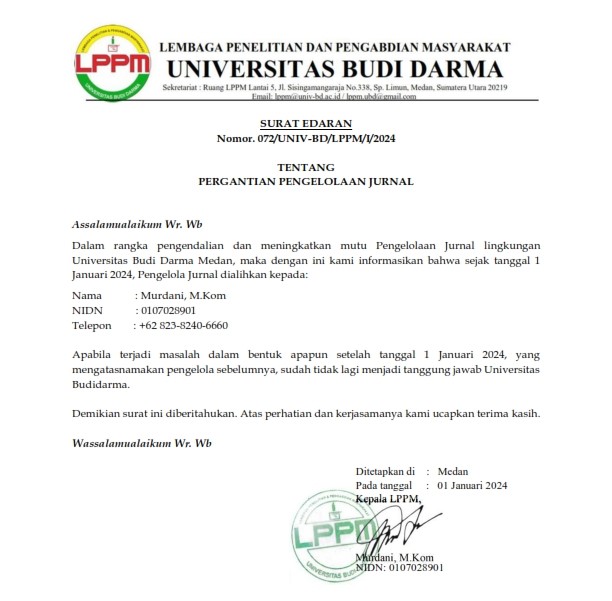Analisis Resiko Kanker Serviks Menggunakan PCA-ANFIS Berdasarkan Historical Medical Record
DOI:
https://doi.org/10.30865/mib.v6i3.3901Keywords:
Adaptive Neuro Fuzzy Inference System (ANFIS), Diagnosis, Cervical Cancer, Computing, Principal Component Analysis (PCA)Abstract
Cervical cancer is the second highest disease in the category of women that accounts for the most deaths based on data from WHO. Based on data from the Global Cancer Observatory (Globocan), cervical cancer has a total of 36,633 cases with a death rate of 21,003 cases due to cervical cancer and is relatively high. People with this disease are often difficult to distinguish between healthy and not. So the purpose of this study is to discuss the diagnosis of cervical cancer using the Adaptive Neuro Fuzzy Inference System (ANFIS) and Principal Component Analysis (PCA) reduction to find the best accuracy in the diagnosis of cervical cancer. ANFIS is a system used for modeling based on fuzzy Sugeno, which considers the simplicity of computation. PCA is a method applied to express information expressed in data and specified in an alternative form. The amount of data used is 72 data with 10 features. Then the data is normalized and feature reduction is performed using PCA. After doing feature reduction by PCA obtained 4 influential features. Furthermore, analysis using ANFIS was carried out from the data that PCA extraction was carried out and which was not carried out. Then the accuracy test is carried out using the confusion matrix. The best result based on diagnostic accuracy is ANFIS using 91.67% PCA with the model obtained from the 3rd k-fold and the membership function type is trapmf, while the accuracy without PCA is smaller than using PCA, which is 86.67%.References
N. Bhatla, D. Aoki, D. N. Sharma, and R. Sankaranarayanan, “Cancer of the cervix uteri,†Int. J. Gynecol. Obstet., 2018, doi: 10.1002/ijgo.12611.
A. Della Sari and A. Della Sari, “Profil Pengetahuan dan Keyakinan Vaksin HPV Sebagai Upaya Pencegahan Kanker Serviks pada Mahasiswa di Universitas Airlangga, Surabaya,†vol. 6, no. 1, pp. 14–22, 2019.
M. Fauza, “Faktor yang Berhubungan dengan Deteksi Dini Kanker Serviks Metode IVA di Puskesmas Kota Padang,†vol. 14, no. 1, 2019.
T. Idayanti, S. F. Umami, R. Zubaidah, and W. Anggraeni, “Deteksi Dini Pencegahan CA Servik dengan Pemeriksaan IVA Pap Smear di Rumah Cantik Almira Beauty Desa Tunggalpager Kec. Pungging Kab. Mojokerto Bekerja Sama dengan PKBI Kabupaten Mojokerto,†J. Community Engagem. Heal., 2021, doi: 10.30994/jceh.v4i2.255.
E. Kusdiyah and M. M. Iskandar, “Peningkatan Pengetahuan Wanita Tentang Kanker Serviks dab Pemeriksaan Pap Smear Sebagai Skrining Awal,†vol. 2, no. 1, pp. 25–28, 2019.
A. Dharma, P. Manalu, G. Stepen, R. Siringoringo, I. S. Palangai, and K. Setiawan, “Deteksi Pola Pasien Kanker Serviks dengan Algoritma Extra Trees dan K-Nearest Neighbor,†vol. 3, no. 2, pp. 32–36, 2020.
A. A. Omololu and O. M. Adeolu, “Modelling and Diagnosis of Cervical Cancer Using Adaptive Neuro Fuzzy Inference System,†World J. Res. Rev., no. 5, pp. 1–3, 2018.
N. Triana, “Sistem Pakar Diagnosa Penyakit Pada Tanaman Seledri Menggunakan Metode Anfis,†J. Terap. Inform. Nusant., vol. 1, no. 8, pp. 418–423, 2020, [Online]. Available: https://ejurnal.seminar-id.com/index.php/tin/article/view/603.
G. Purnamasari, “Analisis Sinyal Ekg Aritmia Untuk Deteksi Risiko Jantung Koroner Menggunakan Adaptive Neuro Fuzzy Inference (Anfis),†J. Kesehat., vol. 1, no. 1, pp. 40–44, 2019.
E. T. Data, A. S. Ritonga, and I. Muhandhis, “Penerapan Text Mining dan Metode DBSCAN untuk Clustering Data Tweet E-Commerce,†vol. 4, pp. 113–123, 2021.
K. A. Widagdo, K. Adi, and R. Gernowo, “Kombinasi Feature Selection Fisher Score dan Principal Component Analysis (PCA) untuk Klasifikasi Cervix Dysplasia,†J. Teknol. Inf. dan Ilmu Komput., 2020, doi: 10.25126/jtiik.2020702987.
A. R. Aziz, B. Warsito, A. Prahutama, and U. Diponegoro, “Pengaruh transformasi data pada metode learning vector quantization terhadap akurasi klasifikasi diagnosis penyakit jantung 1,2,3,†vol. 10, no. 2012, pp. 21–30, 2021.
D. Hediyati and I. M. Suartana, “Penerapan Principal Component Analysis ( PCA ) Untuk Reduksi Dimensi Pada Proses Clustering Data Produksi Pertanian di Kabupaten Bojonegoro,†JIEET J. Inf. Eng. Educ. Technol., vol. 05, no. 02, pp. 49–54, 2021.
P. B. E. and S. T, “Analisis Principal Component Analysis (PCA) Untuk Mereduksi Faktor-Faktor yang Mempengaruhi Kualitas Kulit Kikil Sapi.,†Pros. Semin. Konf. Nas. IDEC, no. May, p. C01.1-C01.10, 2019, [Online]. Available: https://idec.ft.uns.ac.id/prosiding2019.
M. Bobbi, K. Nasution, S. Suryadi, and R. Watrianthos, “Model Pengenalan Suara Teks Bebas Menggunakan Algoritma Support Vector Machine,†J. Media Inform. Budidarma, vol. 4, no. 4, pp. 1249–1255, 2020, doi: 10.30865/mib.v4i4.2436.
L. Mardiana, D. Kusnandar, and N. Satyahadewi, “Analisis Diskriminan dengan K-Fold Cross Validation untuk Klasifikasi Kualitas Air di Kota Pontianak,†vol. 11, no. 1, pp. 97–102, 2022.
Murat Kirisci, M. Ubeydullah Saka, and Hasan Yilmaz, “An ANFIS perspective for the diagnosis of type II diabetes,†Ann. FUZZY Math. INFORMATICS, 2019, doi: 10.30948/afmi.2019.17.2.101.
I. W. Saputro and B. W. Sari, “Uji Performa Algoritma Naïve Bayes untuk Prediksi Masa Studi Mahasiswa,†Creat. Inf. Technol. J., 2020, doi: 10.24076/citec.2019v6i1.178.
A. Miladitiya, “Sensitivitas Dan Spesifisitas Lingkar Pinggang Dalam Mengidentifikasi Kelebihan Berat Badan Dan Obesitas Pada Wanita Dewasa,†Interes. J. Ilmu Kesehat., vol. 7, no. 1, pp. 22–28, 2018, doi: 10.37341/interest.v7i1.64.
Downloads
Published
Issue
Section
License

This work is licensed under a Creative Commons Attribution 4.0 International License
Authors who publish with this journal agree to the following terms:
- Authors retain copyright and grant the journal right of first publication with the work simultaneously licensed under Creative Commons Attribution 4.0 International License that allows others to share the work with an acknowledgment of the work's authorship and initial publication in this journal.
- Authors are able to enter into separate, additional contractual arrangements for the non-exclusive distribution of the journal's published version of the work (e.g., post it to an institutional repository or publish it in a book), with an acknowledgment of its initial publication in this journal.
- Authors are permitted and encouraged to post their work online (e.g., in institutional repositories or on their website) prior to and during the submission process, as it can lead to productive exchanges, as well as earlier and greater citation of published work (Refer to The Effect of Open Access).



